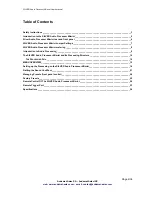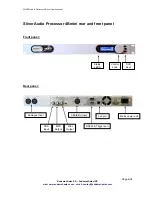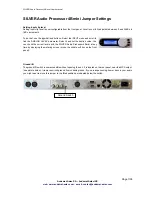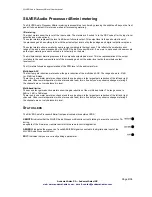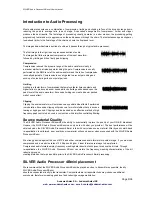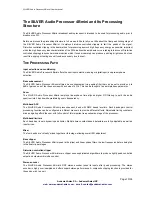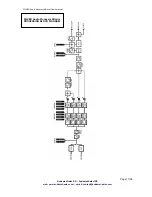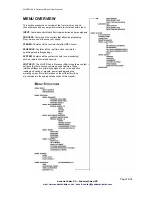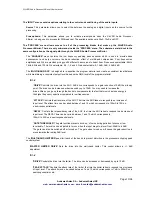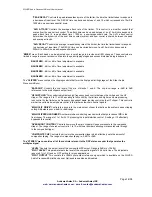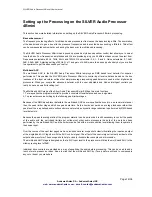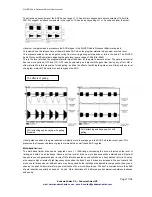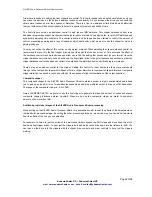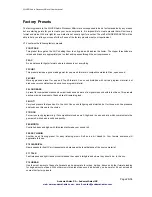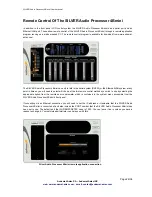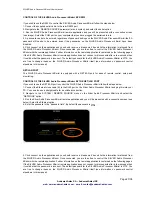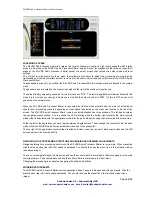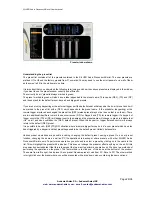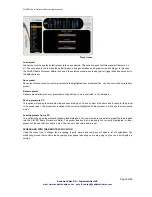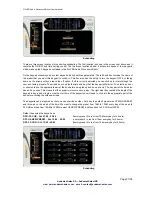
SILVER Audio Processor 4Bmini User’s manual
Page 16/38
Audemat-Aztec SA – Audemat-Aztec INC
web: www.audemat-aztec.com - e-mail: [email protected]
Setting up the Processing on the SILVER Audio Processor
4Bmini
This section has more detailed information on setting up the SILVER Audio Processor 4Bmini’s processing.
Bass enhancement
The frequency contouring effect of multi-band audio processors often leaves the bass lacking a little. The summation
of the bands tends to give a boost to the presence frequencies and leaves the bass sounding a little thin. This effect
can be compensated somewhat by enhancing the bass prior to multi-band processing.
The SILVER Audio Processor 4Bmini has a pseudo parametric style bass equalizer control that allows you to sweet
tune the bass. Four frequencies, amplitudes and Q's are provided giving you 64 different bass curves to select from.
Frequencies selectable: 60Hz, 76Hz, 95Hz and 120Hz. Q's selectable: 0.4, 1, 2 and 4. Gains selectable: 0, 1.5dB,
3dB, 4.5dB, 6dB. A starting setting of 95Hz, Q of 1 and gain of 4.5dB warms the bass up quite nicely but you are free
to experiment to get the bass sound you're after.
Multi-band AGC
The multi-band AGC in the SILVER Audio Processor 4Bmini employs an RMS based level detector for superior
performance. This enables the SILVER Audio Processor 4Bmini to control input level variations based on the true
loudness of the input waveform unlike other simpler average responding peak detectors used in other digital audio
processors. When you couple the advanced detector with the user adjustable and hidden intelligent controls you
really do have a powerful levelling tool.
The Multi-band AGC stage of the Silver Audio Processor 4Bmini-FM has two main functions.
1. To re-equalise the program material to provide a consistent tonal balance and sonic signature.
2. To prevent excessive limiting by the following peak limiter stages.
Because of the RMS based level detectors the multi-band AGC can re-equalise the sound in a more natural manner
than the peak limiter stages which use peak detectors. As the human ear works on average loudness rather than
peak level the re-equalised audio will sound more natural when dynamic range reduction is performed by RMS based
level detectors.
Because the peak to average ratio of the program material can be quite wide it is still necessary to control the peaks
of the audio with the multi-band limiters but unlike most other audio processors the bulk of the work has been
performed by the multi-band AGC and the limiters can be fed with a more controlled level allowing them to operate in
their sweet spot.
Over the course of the next few pages we have included several scope shots clearly illustrating the input and output
of the single band AGC together with the AGC control signal. The effect of the control signal is clearly evident on the
output audio waveform. These scope shots help to visually illustrate the concepts under discussion.
The multi-band AGC stage is designed so that a 0VU input level to the processor will drive the multi-band AGC to the
midway resting level of 0dB.
Individual drive controls are provided as a way of equalizing the audio before processing. This can be used to add a
touch of more presence or bass. Keep in mind that the mutli-band AGC by it's very nature will tend to compensate
any cut or boost you make here.

